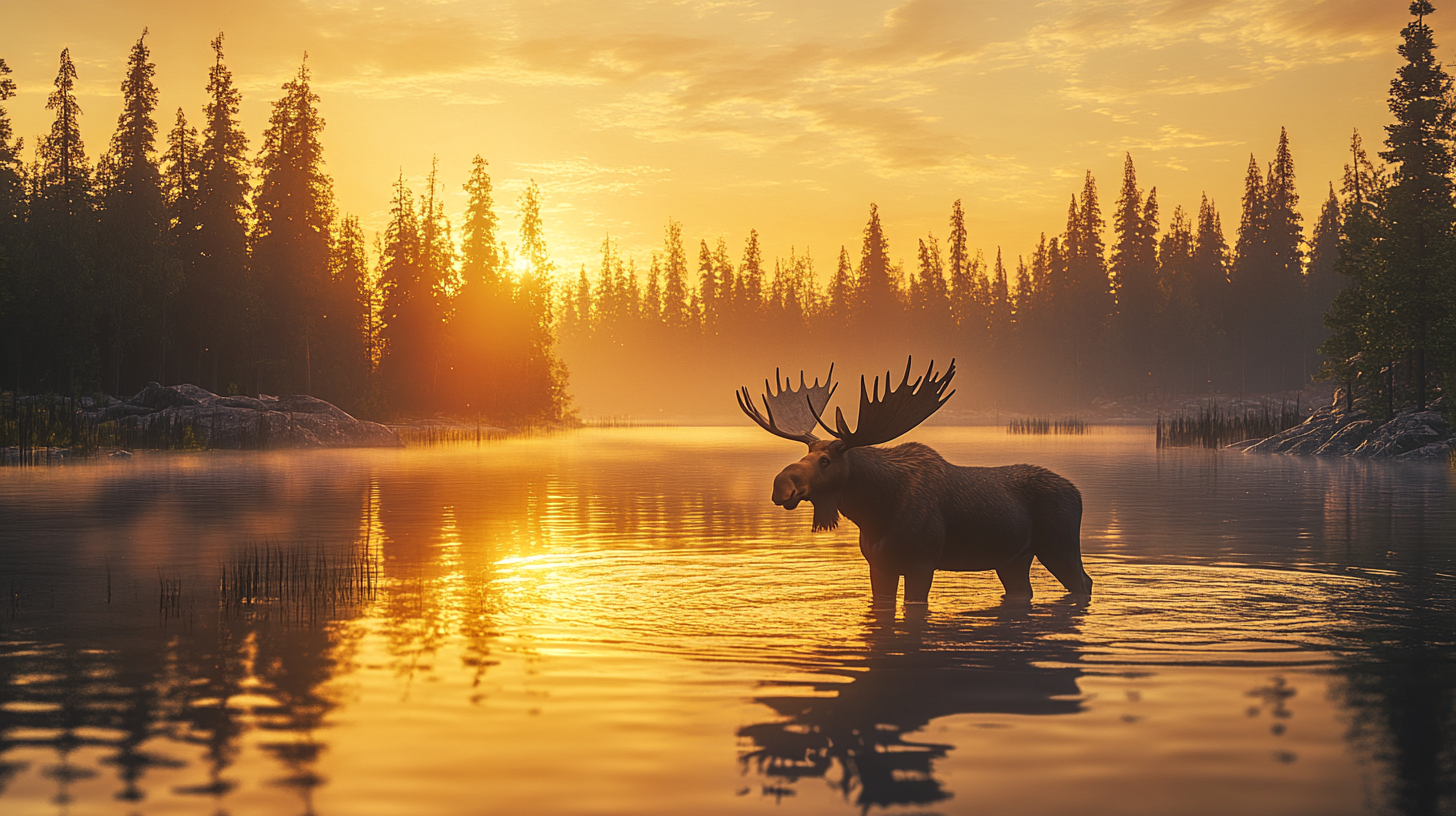Introduction to Isle Royale Wildlife

Isle Royale Wildlife offers a unique and fascinating glimpse into a remote ecosystem where moose, wolves, and loons thrive. This guide explores the animals that make Isle Royale National Park a wildlife haven, providing tips on where to spot them and how to observe them responsibly.
Why Isle Royale Wildlife is Unique
Isle Royale Wildlife stands out due to the park’s isolation and its carefully balanced predator-prey ecosystem.
- Island Ecology: The isolation of Isle Royale has led to a distinctive ecosystem where animals have adapted uniquely to their environment.
- Moose and Wolves: The interaction between moose and wolves is one of the most studied predator-prey relationships in the world.
- Biodiversity: From mammals to birds, reptiles, and amphibians, Isle Royale Wildlife includes a rich variety of species.
Moose and Wolves: The Icons of Isle Royale Wildlife
Moose
- Population: Isle Royale Wildlife includes over 1,000 moose, making them one of the park’s most prominent species.
- Where to Spot Them: Moose are often seen near lakes and wetlands, particularly along the Greenstone Ridge Trail.
- Best Times: Early mornings and evenings provide the best opportunities to observe moose.
Wolves
- Population: Wolves, though fewer in number, are crucial to maintaining the balance of Isle Royale Wildlife.
- Role in the Ecosystem: Wolves regulate the moose population, preventing overgrazing and preserving the park’s vegetation.
- Spotting Wolves: While they are elusive, their tracks and howls are signs of their presence in the park.
Other Mammals in Isle Royale Wildlife
- Red Fox: These curious animals are commonly spotted near trails and campsites, adding charm to Isle Royale Wildlife.
- Beavers: Known for their engineering feats, beavers are often seen near Feldtmann Lake and other wetlands.
- Snowshoe Hares: These small, shy creatures blend perfectly into the island’s forested areas.
Birdwatching in Isle Royale Wildlife
Isle Royale Wildlife includes a variety of bird species, making it a birdwatcher’s paradise.
Common Birds
- Loons: The haunting calls of loons echo across the lakes, making them an iconic part of Isle Royale Wildlife.
- Bald Eagles: Frequently seen soaring above shorelines or perched in tall trees.
- Woodpeckers: The park’s forests host several woodpecker species, including the pileated woodpecker.
Best Locations for Birdwatching
- Rock Harbor: A prime spot for loons and waterfowl.
- Feldtmann Lake: Ideal for spotting shorebirds and wading birds.
Reptiles and Amphibians in Isle Royale Wildlife
While not as prominent as mammals or birds, reptiles and amphibians are an essential part of Isle Royale Wildlife.
- Garter Snakes: Harmless and often seen along sunny trails.
- Wood Frogs: Found near wetlands and active during spring and summer.
Top Spots to Observe Isle Royale Wildlife
- Greenstone Ridge Trail: Offers panoramic views and frequent moose sightings.
- Feldtmann Lake: Known for its diverse Isle Royale Wildlife, including beavers and loons.
- Washington Creek: A hotspot for red foxes and smaller mammals.
Tips for Ethical Wildlife Watching
- Respect the Animals: Maintain a safe distance and never feed wildlife.
- Use Binoculars: Get a closer view without disturbing Isle Royale Wildlife.
- Minimize Noise: Quieter visitors are more likely to observe animals.
- Follow Park Rules: Abide by guidelines to protect the park’s ecosystem.
Preserving Isle Royale Wildlife
Protecting Isle Royale Wildlife is critical for maintaining the park’s ecological balance. Visitors are encouraged to follow Leave No Traceprinciples and support conservation efforts to ensure the park remains a sanctuary for its unique species.
Why Isle Royale Wildlife is Must-see

Isle Royale Wildlife offers visitors a rare chance to witness nature at its most untouched. From moose grazing by a lakeshore to loons calling across the water, the island’s remote setting allows for intimate and unforgettable wildlife encounters.
Plan your trip to Isle Royale National Park and experience the magic of its wildlife. Learn more about hiking, camping, and travel tips →

